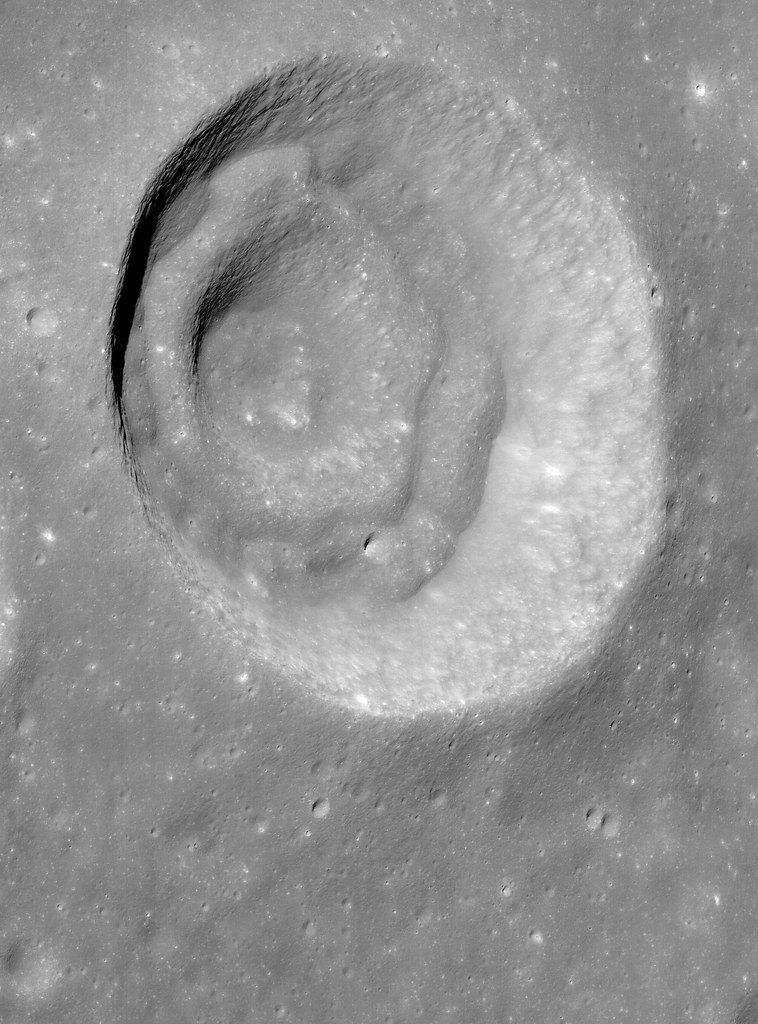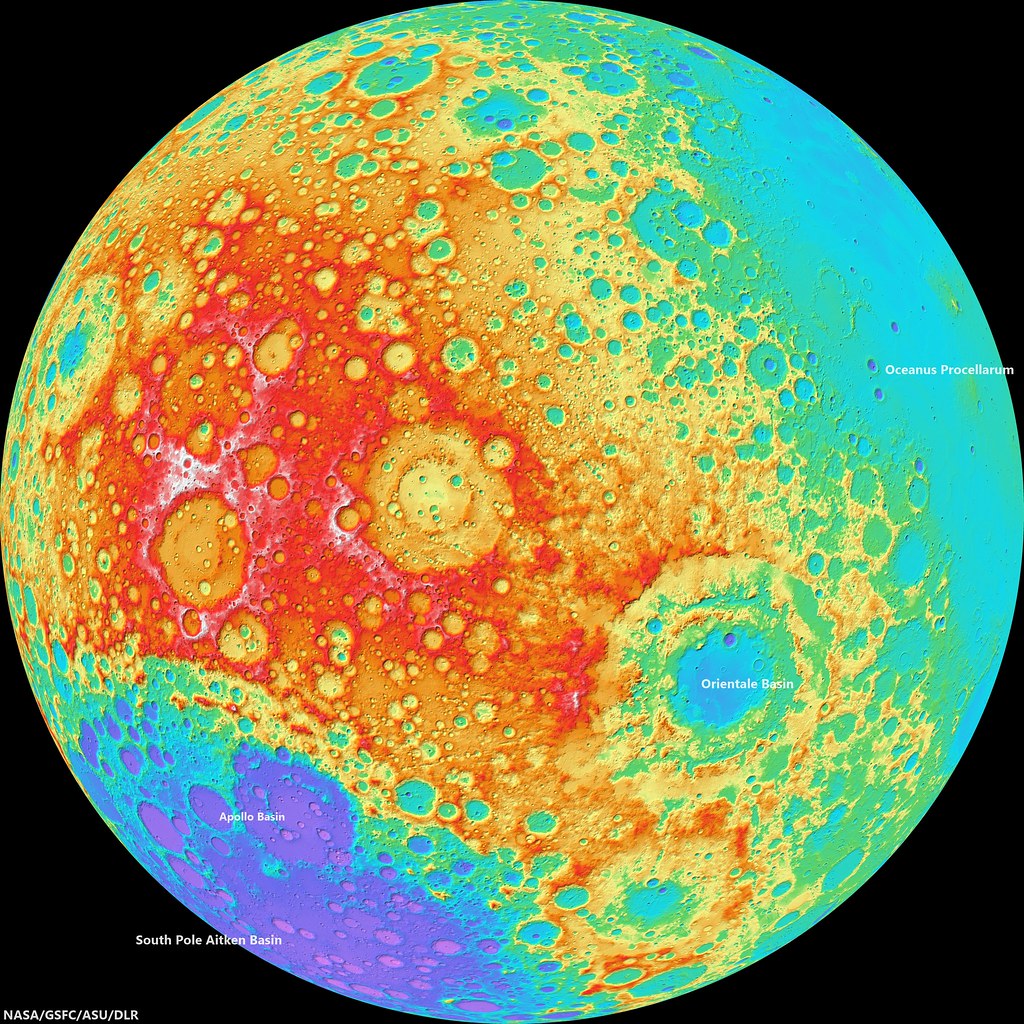 |
| Oblique view of an unnamed but prominent 12 km-wide concentric crater in the Apollo Basin, centered on 30.757°S, 205.931°E. Spacecraft and camera were slewed eastward off nadir 57.74° from 76.2 km over 31°S, 200.62°E, LROC NAC mosaic M1097537923LR, spacecraft orbit 14102, July 21, 2012; resolution roughly 2 km in the original [NASA/GSFC/Arizona State University]. |
LROC News System
The May 22, 2013 Featured Image showed a portion of an unnamed concentric crater located in the Apollo Basin. Today’s Featured Image is a spectacular oblique (58° from vertical) view of that same crater.
Lunar geologists find craters useful in investigations because they tell so much about the geological history of the Moon. Craters reveal structural properties below their surface and the relative ages of the surfaces where they formed. How can looking at a hole in the ground be so insightful?
Combining imaging with numerical modeling and laboratory experiments, we can test how different structural properties beneath craters affect their shape and size, and even derive information about the direction of the impactor that formed the crater. Crater counting lets us estimate how long a surface has been exposed; more craters indicate an older surface. While insightful, these techniques do not conclusively describe the formation mechanism for all observed crater shapes. That is the case for concentric craters such as the one in today’s post, an unnamed 11.5 km concentric crater located in the Apollo Basin, centered at 30.757°S, 205.923°E. Concentric craters have an inner rim whose formation mechanism is not yet entirely understood, but the concentric mounds may indicate that there is a discontinuity, such as layers with different strengths, in the subsurface excavated by the impact.
Craters are beautiful landscapes depicting the violent impact history of the moon, but are also a reminder of how human ingenuity can unravel the formation mechanisms of geological features on other worlds. As is the case for concentric craters, some of nature’s mysteries require on-site human and robotic investigations to fully understand them.
Investigate and zoom into the full resolution LROC-processed NAC frame, HERE.
Related Posts:
Concentricity in Apollo Basin (May 22, 2013)
Concentric crater (Gruithuisen K - August 4, 2010)
LOLA's Apollo Basin (April 24, 2010)
Apollo Basin: Mare in a Sea of Highlands (March 30, 2010)
"Biggest, deepest crater," an excavation of the hidden, ancient Moon (March 6, 2010)
The May 22, 2013 Featured Image showed a portion of an unnamed concentric crater located in the Apollo Basin. Today’s Featured Image is a spectacular oblique (58° from vertical) view of that same crater.
Lunar geologists find craters useful in investigations because they tell so much about the geological history of the Moon. Craters reveal structural properties below their surface and the relative ages of the surfaces where they formed. How can looking at a hole in the ground be so insightful?
Combining imaging with numerical modeling and laboratory experiments, we can test how different structural properties beneath craters affect their shape and size, and even derive information about the direction of the impactor that formed the crater. Crater counting lets us estimate how long a surface has been exposed; more craters indicate an older surface. While insightful, these techniques do not conclusively describe the formation mechanism for all observed crater shapes. That is the case for concentric craters such as the one in today’s post, an unnamed 11.5 km concentric crater located in the Apollo Basin, centered at 30.757°S, 205.923°E. Concentric craters have an inner rim whose formation mechanism is not yet entirely understood, but the concentric mounds may indicate that there is a discontinuity, such as layers with different strengths, in the subsurface excavated by the impact.
 |
| LROC WMS (Quick Map) Wide Angle Camera (WAC) mosaic of the 11.5 km concentric crater (center), in context with north and northwestern Apollo basin. [NASA/GSFC/Arizona State University]. |
Investigate and zoom into the full resolution LROC-processed NAC frame, HERE.
Related Posts:
Concentricity in Apollo Basin (May 22, 2013)
Concentric crater (Gruithuisen K - August 4, 2010)
LOLA's Apollo Basin (April 24, 2010)
Apollo Basin: Mare in a Sea of Highlands (March 30, 2010)
"Biggest, deepest crater," an excavation of the hidden, ancient Moon (March 6, 2010)



No comments:
Post a Comment